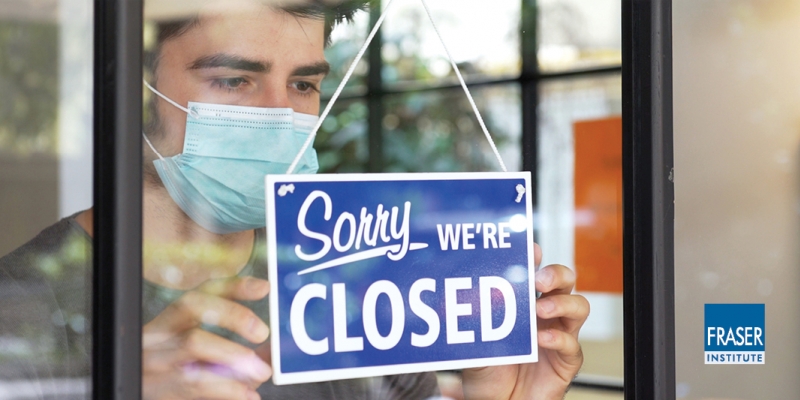The write-up accompanying my report on COVID in Canada and the world released today by the Fraser Institute. The full report is available here.

The economic and fiscal disruption and associated effects of the pandemic in Canada and around the world were severe and unprecedented. The general effects of the pandemic were to disrupt health, social, governmental, and economic systems. While the impact of the pandemic on Canada and the world was similar, variations in demographics, timing of the spread and response, and other characteristics have meant that the effects on health, the response, and the economic and fiscal impacts have varied across countries.
At 103,874 total cases per million population by June 2022, Canada performed remarkably well: incidence was the fourth lowest among the IMF Advanced Economies. Moreover, of the IMF Advanced Economies, Canada was 27th out of 38 at 1,103 deaths per million population; Japan was the lowest at 248 total COVID-19 deaths per million population. Canada did not fare as well for crude COVID mortality: its rate of 1.1% is the second highest of the IMF Advanced Economies. As for responses to the pandemic, at 227 vaccinations per 100 population, Canada had the 7th highest vaccine uptake rate of the IMF Advanced Economies and the 3rd highest level of stringency in its responses to the pandemic as measured by the Oxford University’s COVID19 Government Response Tracker.
Impact on the economy
Canada’s estimated real per-capita GDP growth was negative and the country ranked 29th out of 40 IMF Advanced Economies and had the second-worst performance of the G7 countries over the period from 2019 to 2022. Canada, during the first pandemic year, had the second worst employment drop of the IMF Advanced Economies at 5.1%, coming in just ahead of the United States. However, during the rebound in 2021, Canada had the second highest employment growth of the IMF Advanced Economies. Canada’s unemployment rate in 2020 of 9.6% was higher than the world average (9.2%), the G7 average (6.6%), and the average for the IMF Advanced Economies (6.3%). According to the International Monetary Fund’s inflation estimates for 2021, Canada was mid-ranked (19th highest) amongst the IMF advanced economies. However, a particularly high proportion of Canada’s inflation appears to be linked to demand-side rather than supply-side factors. As well, Canada ranked 9th out of 30 OECD comparator countries for the size of the increase in housing prices.
Overall, Canada’s performance in controlling COVID-19 incidence and vaccine uptake was good but this was accompanied by lower testing rates for COVID as well as higher crude mortality rates. In terms of economic performance, Canada did not fare well in per-capita GDP growth during the pandemic; employment growth was also low, though this did improve in 2021. Canada was also generally mid-ranked for inflation compared to the IMF Advanced Economies, though it appears to have had a higher proportion of its inflation driven by demand-side factors. Canada’s success in some aspects of dealing with COVID appears to have come at an exceptionally high price, particularly from negative short-term employment effects and weaker per-capita GDP growth.
Impact on the fiscal situation
In 2020, of 194 IMF countries, at an increase of government expenditure of 19.7%, Canada ranked 25th highest in the world for spending. This increase of nearly 20% was well above the world average of approximately 9%, the G7 average of 13%, and the average of the IMF Advanced Economies of nearly 11%. Canada also averaged a 2.2% drop in general government revenue in 2020 according to the IMF, not as severe as the average drops for either the IMF Advanced Economies or the G7.
The world saw its negative fiscal balance widen from 3.6% in 2019 to over 10% in 2020 before starting to decline to under 8% in 2021 and to just over 5% in 2022. According to the IMF, Canada initially saw a negative fiscal balance of about 11% in 2020 from a balance of close to zero in 2019. The fiscal balance for 2020 was later revised to 11.4%, with a revised forecast of 4.7% in 2021 and 2.1% in 2022.
Globally, from 2019 to 2021, the average gross debt-to-GDP ratio rose from 57% to 67%. All together 161 out of 196 countries—nearly 80%—saw an increase in their gross debt-to-GDP ratios from 2019 to 2021. Canada saw its gross debt-to-GDP ratio increase by nearly 25 percentage points from 2019 to 2021, the 15th largest increase in the world. It is worth noting that, of the increased government debt accumulated in Canada during the pandemic, much was incurred by the federal government rather than the provincial governments.
Canada’s fiscal response was especially large and driven mostly by the federal response. In some respects, the ability of Canada to ramp up its fiscal response in time of need reflects its long-term prudent fiscal management and resulting low debt-to-GDP ratio achieved in the decades after the federal fiscal crisis of the 1990s. At the same time, the size of the deficit and fiscal response during the pandemic should not be allowed to become a long-term feature of the public finances given the recent rise in interest rates, especially as it limits the ability and fiscal flexibility for responses to future events.



















